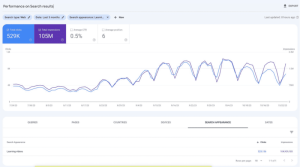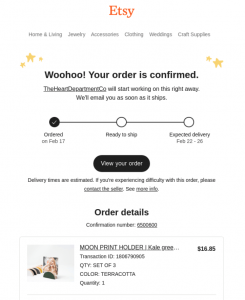Don’t be put off by perceptions of complexity, laying fresh tracks is less about succeeding initially and more about just doing it.

Try as I might, I failed to get my kids excited about most sports. They took more to the arts. Surprisingly, though, skiing was different. A perfect groomer, fresh powder, mogul runs, even the steeps — they love it all. Maybe it was just how we got them into it. The joy was in “just doing it.”
That’s how I’m starting to feel about ABM. It’s less about succeeding out of the gate and more about just doing it — and how our every little move makes us better. So if you’re struggling with ABM, or even if you haven’t begun a program, make 2019 the year you jump in.
Don’t be put off by perceptions of complexity. Don’t delay by thinking you need some miracle new piece of software. Start by taking a closer look at your existing processes and how you view your information and then make tweaks. You can easily supplement these tweaks with new sources of insight available right now. Here are two great ways to get started.
1. Get your scoring model on track
Basic lead scoring, delivered via marketing automation, is still the most popular source of account insight that B2B marketers provide to sales. Because it can generate timely alerts for attentive lead catchers, this functionality is definitely better than nothing. But with better models of real account behavior and richer sources of near real-time insight now available, it’s high time we addressed the inherent weaknesses of automated lead scoring. As we enter the New Year, here are several ways that your current lead-based approach could be holding you back, beginning with the inputs to your model:
Firmographics and technographics
Companies selling mature products into mature markets use firmographics and technographics to protect themselves from wasted effort. They know that they don’t want to even try to sell into certain situations. A model built to exclude unsellable demand is good for them. In contrast, if you’re growth-oriented, you’ll want to be more careful about how your model — your filters — exclude unfamiliar indicators of valuable demand. While behavioral signals from companies that fall outside of your historic sweet spot may not fit into your standard lead-handling approach, if you’re looking for new sources of demand, at a minimum, you’ll want to design a way to preserve this information — whether obtained from outbound, inbound and 3rd-party channels alike.
Demographics
How do you choose the demographic inputs for your chosen automated model? In our experience, they often reflect historic data from past deals when they closed. The problem with this is that the information recorded on the transaction rarely communicates how the process began. And if lead scoring is conceived to provide early evidence of a buying process, the demographics at the start will likely be very different from at the close. While some buyer’s journeys still get kicked off at the top of an organization, most bubble up from innovators on the front lines. While innovators — usually lower-level players — provide the best early warning signals, as individuals, they don’t carry enough decision-making weight to garner a high score. Many lead-scoring models, therefore, discount exactly the people whose behavior would give your company an early leg up.
Behavior
Ironically, the biggest challenge with automated scoring may arise from its greatest benefit — its ability to capture behavioral signals. This is why today’s advanced ABM practitioners are turning to quality sources of third-party purchase intent data:
- Delay kills demand. The basic problem is that, for most companies, there just aren’t very many of these signals to “qualify” any given individual. The more rigor you apply to scoring, the more crowded your market and the smaller your presence, the more likely you are to suffer negative consequences. While you’re waiting for more and better signals, the prospect is moving on with their journey. Use real third-party purchase intent to determine if the account is in market and then accelerate your pursuit of deal-centered engagement.
- Over-scoring adds cost and worse. Knowing this, many marketers try to goose the model by scoring certain behaviors much higher than others. But that’s commonly based on internal constituency preferences more than knowledge about real buying patterns. Too many companies are still using their inside sales resource more to disqualify leads than to pursue real demand. MQLs are quickly dispositioned negatively and, worse, that quick decision can easily taint any further leads from that account that might be following close behind. Until you can find a way to better inform your lead qualification team about what’s going on in the account — and get them to pay attention to this information — your scoring efforts can actually backfire at this critical hand-off point.
- The real failure of leads. Since B2B purchases are made by groups, the most important behavioral indicators of purchase are not understandable at the individual level at all. If you’re not working to link people together within accounts, you’re missing the behavior that matters most. To create a valid rationale that inspires proactive outreach by your people to the prospect’s people, you need to be able to show that an account is in market and the specific people are involved in buying behaviors. You need to adjust your reliance on lead scoring and place more emphasis on behavioral signals coming from groups within accounts. Quality third-party purchase intent data can provide this information.
2. Keep BANT from holding you back
Despite the positive aspects of a BANT-qualified lead, it’s still a lead-based idea, and that makes it the poster child for everything that’s problematic about leads in general. Because its origin lies in sales teams’ need to pursue efficient account penetration (by connecting with an empowered person), BANT forces us marketers to delay sharing information. BANT requirements force us to spend precious time and effort building a case to go after “that guy” — even as we ignore other members of the buying unit (not to speak of buying units at accounts where we just can’t seem to connect with “that guy” at all). By decoupling account information from leads, leading ABM practitioners are now using alternative sources of data to populate BANT-quality information at the account or buying-unit level much earlier in the process. In doing so, they’re providing sales teams with a much better chance to see and break into more deals. What’s more, they’re doing it much earlier, at the point where their sellers still have a chance to shape outcomes to their company’s advantage.
Better ways of establishing “Need”
When you rely too much on leads as your initial source of information about an account’s understanding of its need for a solution, you’re assuming they’ll come looking for you. Alternatively, you could lookalike model the account and bombard it with cold calls looking for that understanding. A better approach — one that finds you more demand earlier — is to seek out third-party data sources that can show you who inside the right accounts is looking for solutions like yours. This won’t initially give you any type of lead at all. It will, however, tell you where those leads should be coming from, right now. It’s then up to you to prioritize that account and create engagement!
Better ways of “Timing” the market
At best, the BANT stricture on timing is used to help sales teams distinguish between what leads are “real” and which don’t yet have enough momentum to really be believed. Too often, however, when timing doesn’t meet a seller’s exact criteria, it’s used as a rationale to de-prioritize the lead. On the client side, timing can change very quickly. That’s why advanced ABMers are using third-party purchase intent to monitor accounts for changes in behavior. In this way, they can see deals suddenly heating up without having to rely on a task calendared in a sales rep’s CRM. Instead, they can alert the sales team early on that an active account needs prioritized engagement.
Better ways of engaging “Authority”
Even in the old days of top-down command-and-control management, leaders relied on their front-line teams to identify and solve problems. And especially today, if a team doesn’t support a recommended change, there’s a good chance that it will never gain enough traction to be moved forward. In today’s reality, teams are the agents of change. ABM leaders have recognized this. Instead of looking for managers after they’ve “authorized” a project, they pursue teams that are seeking a solution and work with them to shape it into a proposal. To enable this approach, marketing needs to help identify an active team and the issues it is grappling with. Then, together with sales enablement, they help position their offering in context with the buying unit’s needs. They’re able to do this because new sources of purchase intent data can illuminate a team’s specific concerns and focus areas — the features and drivers likely to fulfill their requirements. By getting the team on board, sales can actually become a partner in helping to accelerate the approval process.
Better ways of addressing “Budget”
If you’re not driving the budget bus, you stand a good chance of getting run over by it. Again, the budget question in BANT is there, at best, to help establish whether or not a real opportunity exists. At worst, after all your effort, it can suggest the deal isn’t worth pursuing at all. ABM leaders using better data are now getting insight into buyer’s journeys before budgets have been set. This enables them to deploy value-selling techniques and drive a budget-creation scenario where both the buyer and seller can win.
3. Make 2019 the year you move beyond classical lead-based demand gen
As we all know from industry research (and our own low conversion-to-opportunity rates), individuals are rather poor predictors of B2B purchase behavior. B2B purchases are made by groups. And though lead-based marketing can try to adjust for this by layering on qualification gates, analytical scoring models, etc., none of these techniques really address the core issues. Instead, all in the name of avoiding costly mistakes downstream, they end up adding cost, delaying effective sales actions, and reducing your business potential. So while its super-exciting how, as ITSMA reports, 45 percent of ABMers report doubling their ROI, still (according to Engagio), only 24 percent of companies have reached an advanced stage of ABM practice. What better reasons could you ask to make 2019 the year your team create some fresh new tracks of its own?
Opinions expressed in this article are those of the guest author and not necessarily Marketing Land. Staff authors are listed here.
Marketing Land – Internet Marketing News, Strategies & Tips
(79)
Report Post






